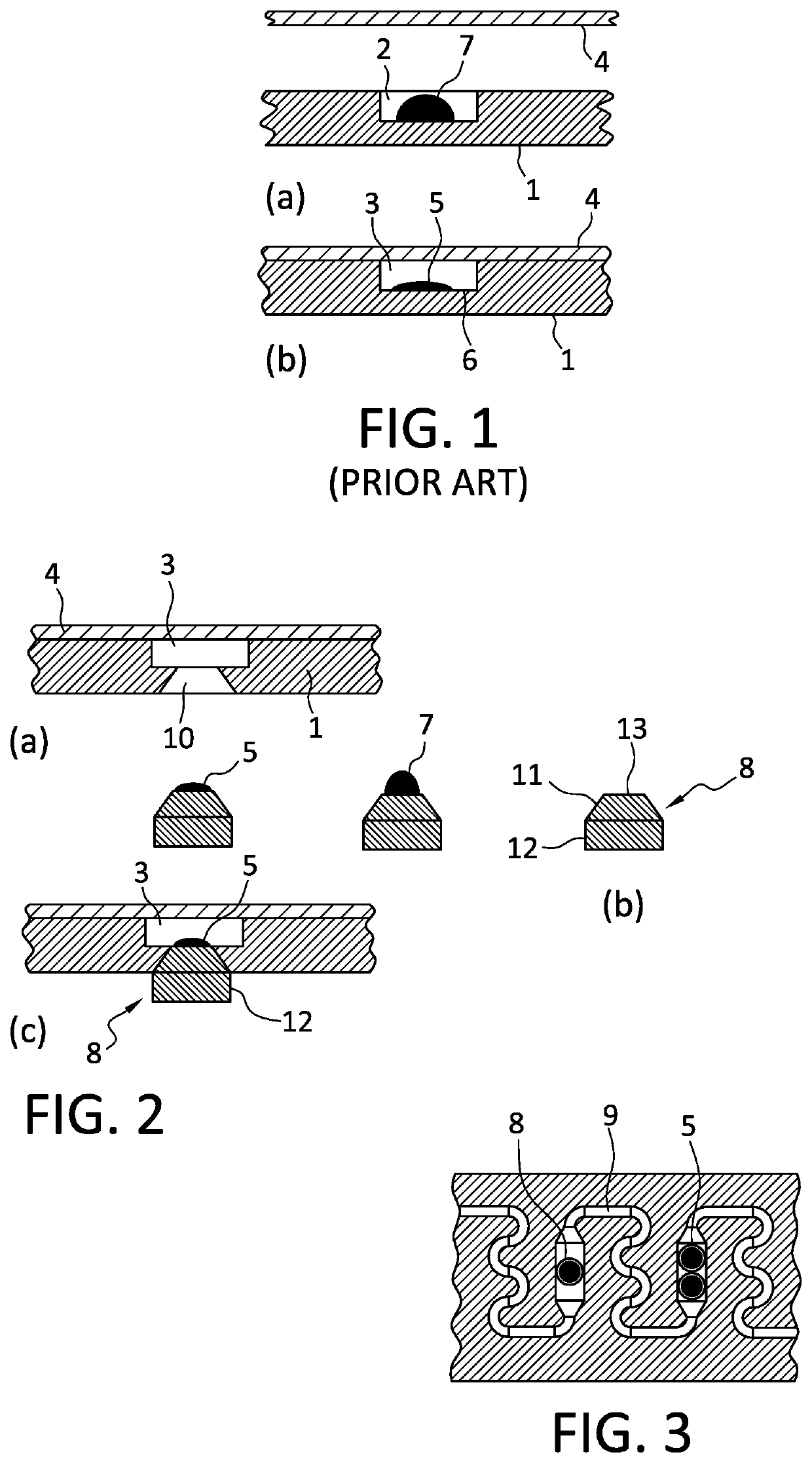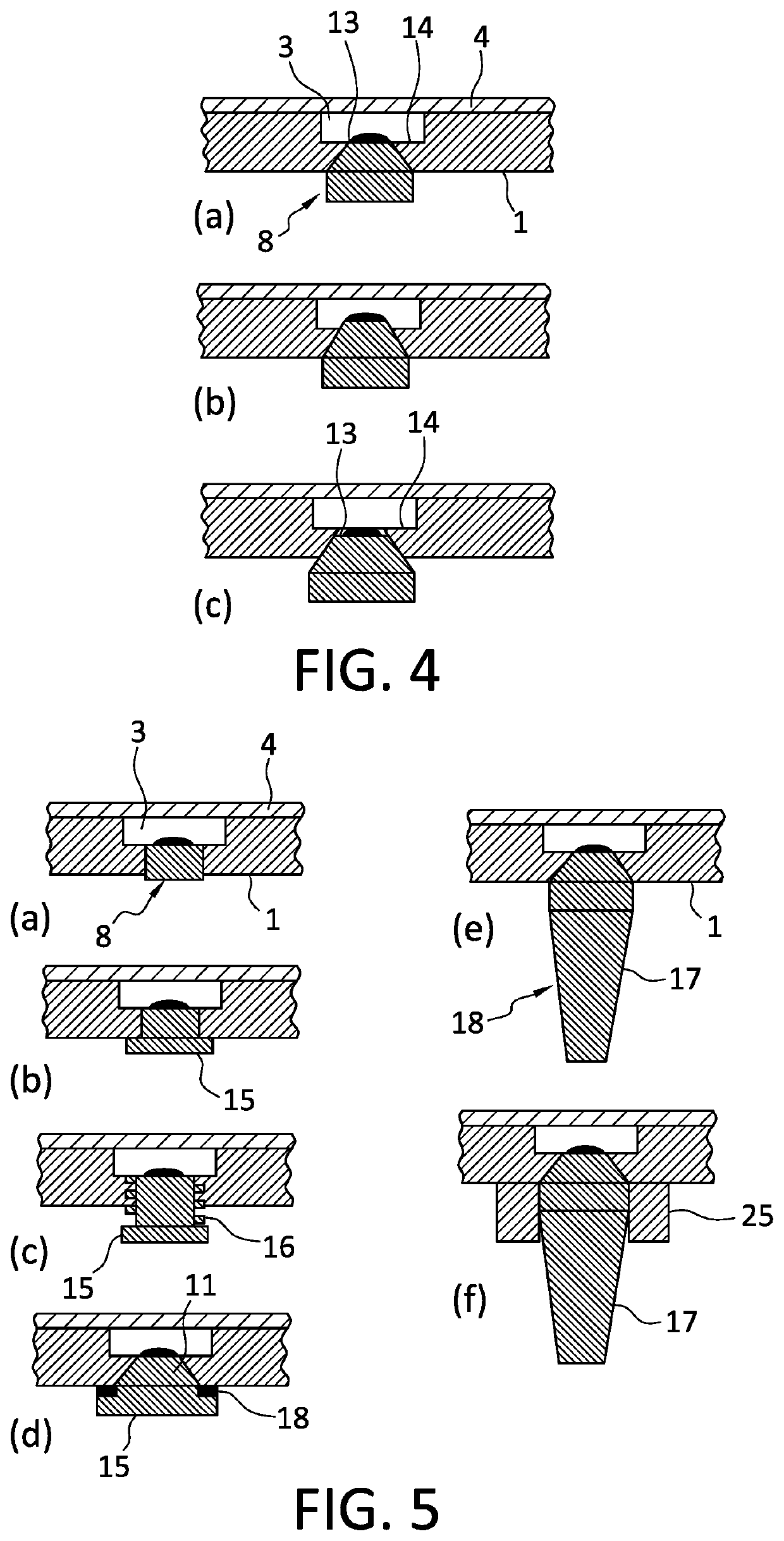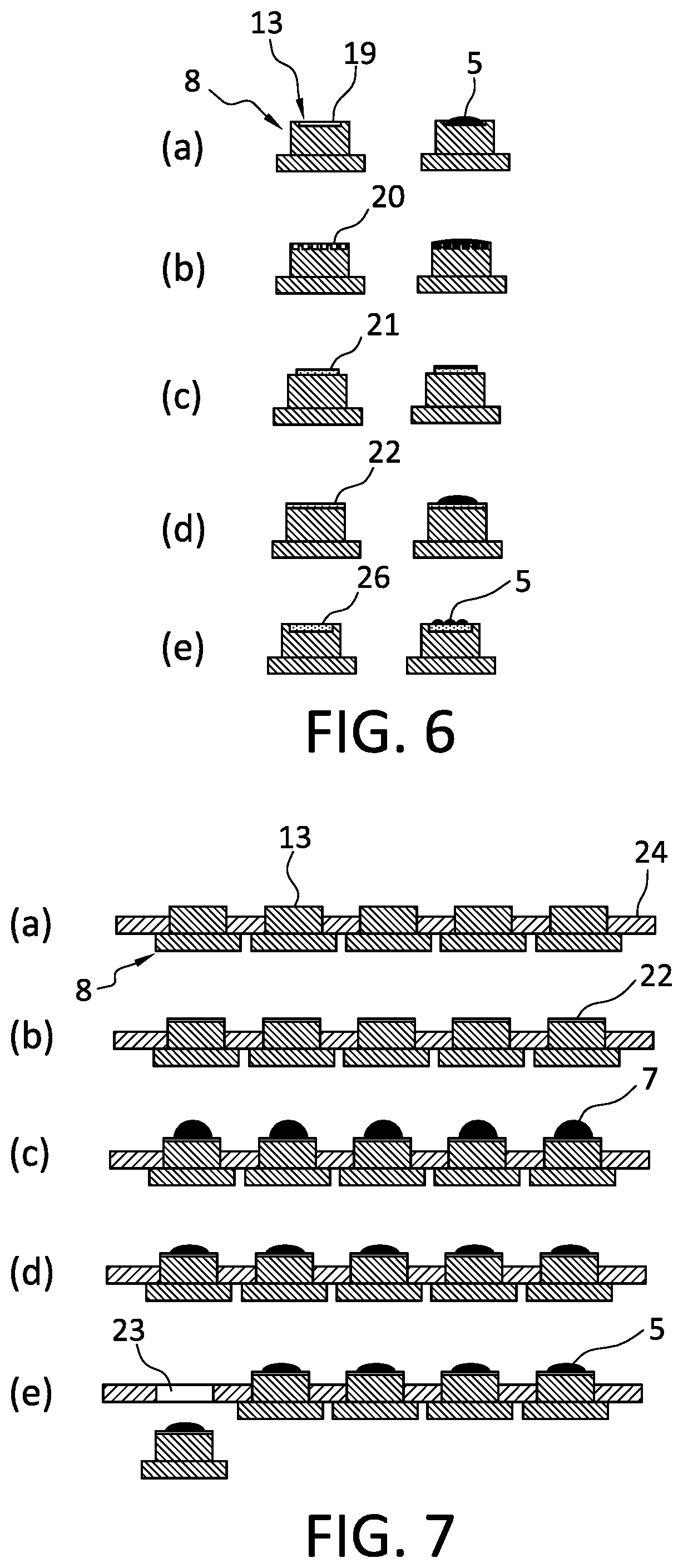Carrier element for introducing a dry substance into a flow cell
a technology of flow cell and carrier element, which is applied in the direction of analytical using chemical indicators, laboratory glassware, instruments, etc., can solve the problems of occupying a large space in the drying chamber, and affecting the flow cell component itself, so as to achieve the effect of easy production
- Summary
- Abstract
- Description
- Claims
- Application Information
AI Technical Summary
Benefits of technology
Problems solved by technology
Method used
Image
Examples
Embodiment Construction
[0029]A flow cell, part of which is shown in FIG. 1, comprises a plate-shaped substrate 1 with a recess 2, which is covered to form a cavity 3 by a film 4, which is adhesively bonded and / or welded to the substrate. The cavity 3 is part of a channel network of the flow cell (the rest of which not being shown in FIG. 1); in particular, it forms a channel area in which a dry reagent 5 comprising antibodies, for example, adheres to a channel wall 6.
[0030]The dry reagent 5 originates from a reagent liquid 7, which is dispensed into the recess 2 forming a channel or chamber area of the flow cell before the recess 2 is sealed by the film 4. To obtain the dry reagent 5 from the reagent liquid 7, the entire substrate 1 is subjected to a heat treatment and / or a freeze-drying process.
[0031]FIG. 2 shows a method for introducing a dry substance, especially a dry reagent 5, into a flow cell, in which the dry reagent 5 is applied to a separate carrier part 8. A cavity 3 in a flow cell, which can b...
PUM
| Property | Measurement | Unit |
|---|---|---|
| thickness | aaaaa | aaaaa |
| thicknesses | aaaaa | aaaaa |
| thicknesses | aaaaa | aaaaa |
Abstract
Description
Claims
Application Information
 Login to View More
Login to View More - R&D
- Intellectual Property
- Life Sciences
- Materials
- Tech Scout
- Unparalleled Data Quality
- Higher Quality Content
- 60% Fewer Hallucinations
Browse by: Latest US Patents, China's latest patents, Technical Efficacy Thesaurus, Application Domain, Technology Topic, Popular Technical Reports.
© 2025 PatSnap. All rights reserved.Legal|Privacy policy|Modern Slavery Act Transparency Statement|Sitemap|About US| Contact US: help@patsnap.com



